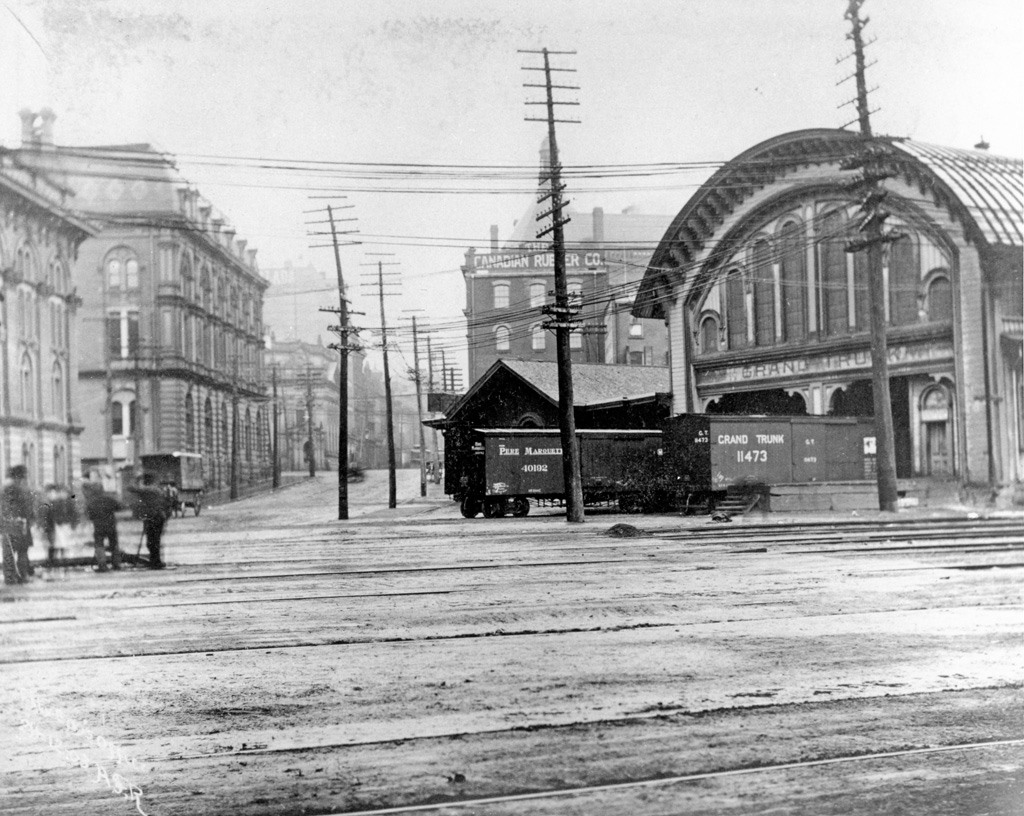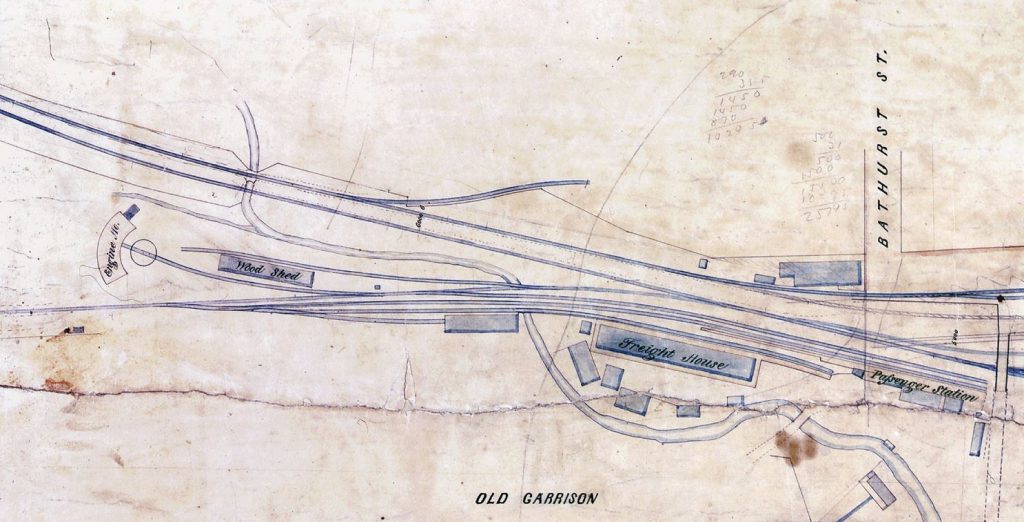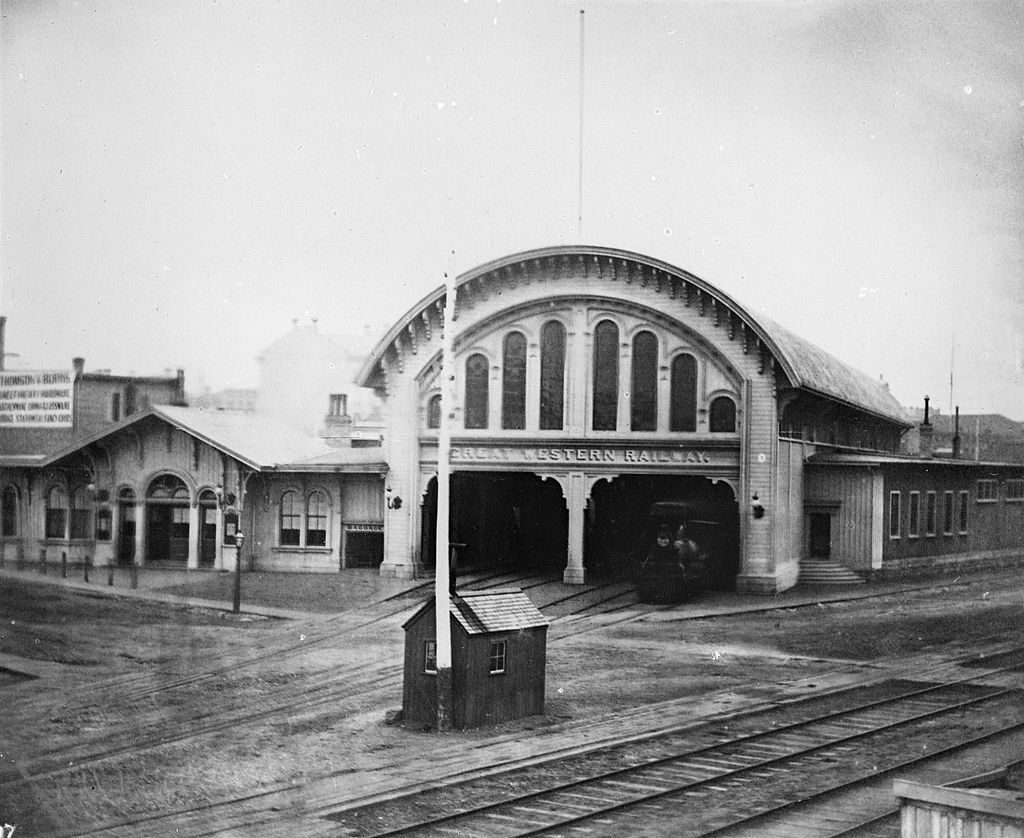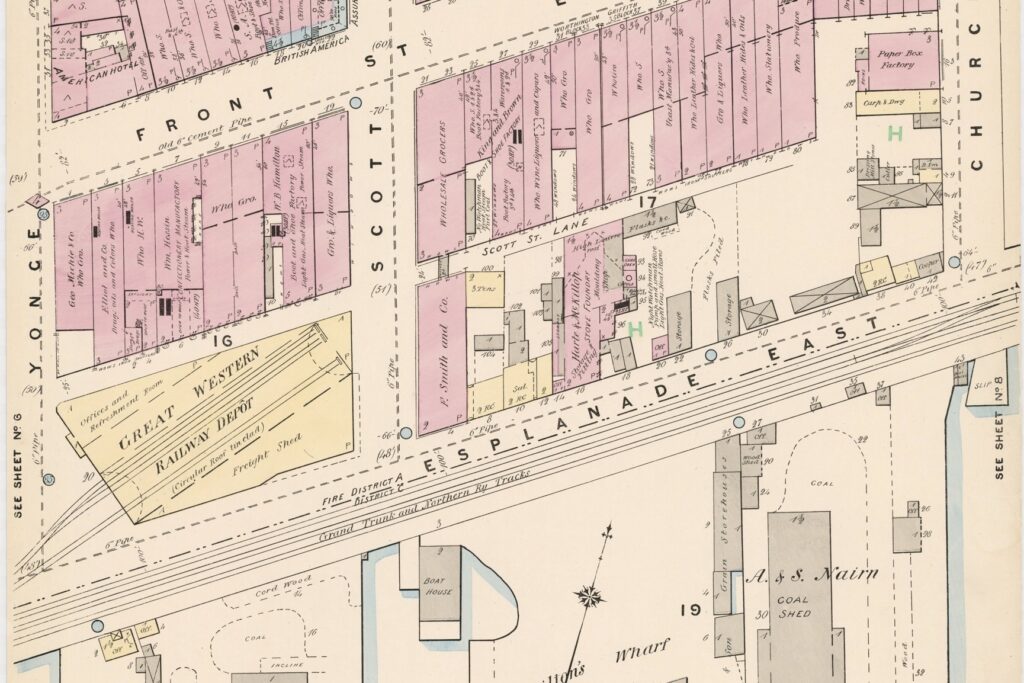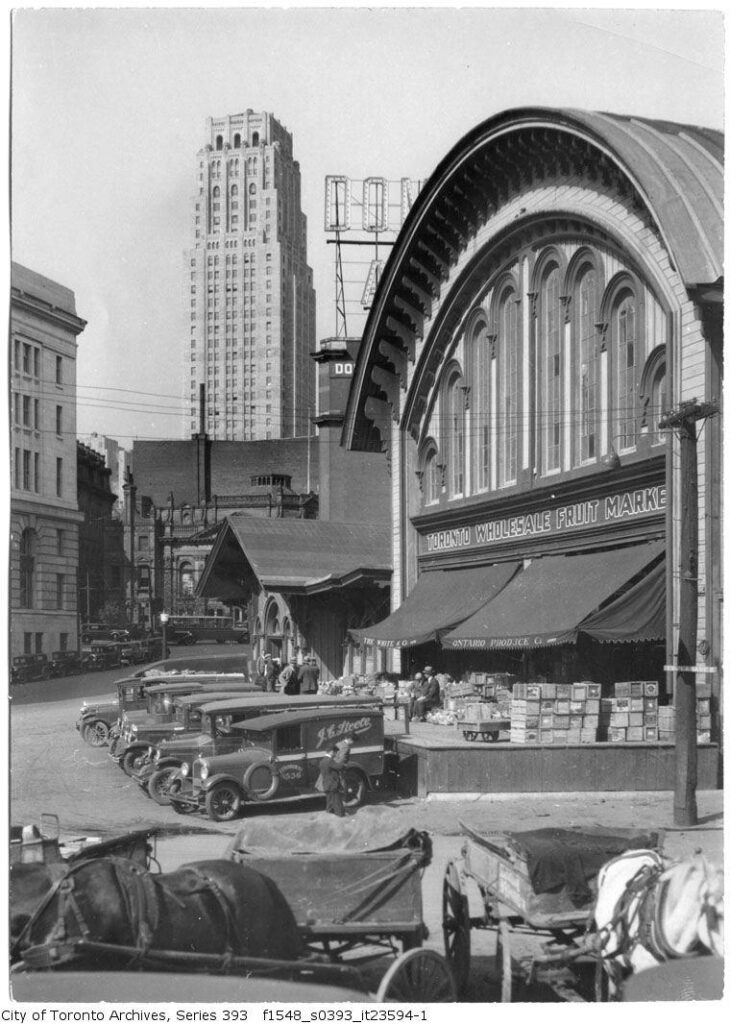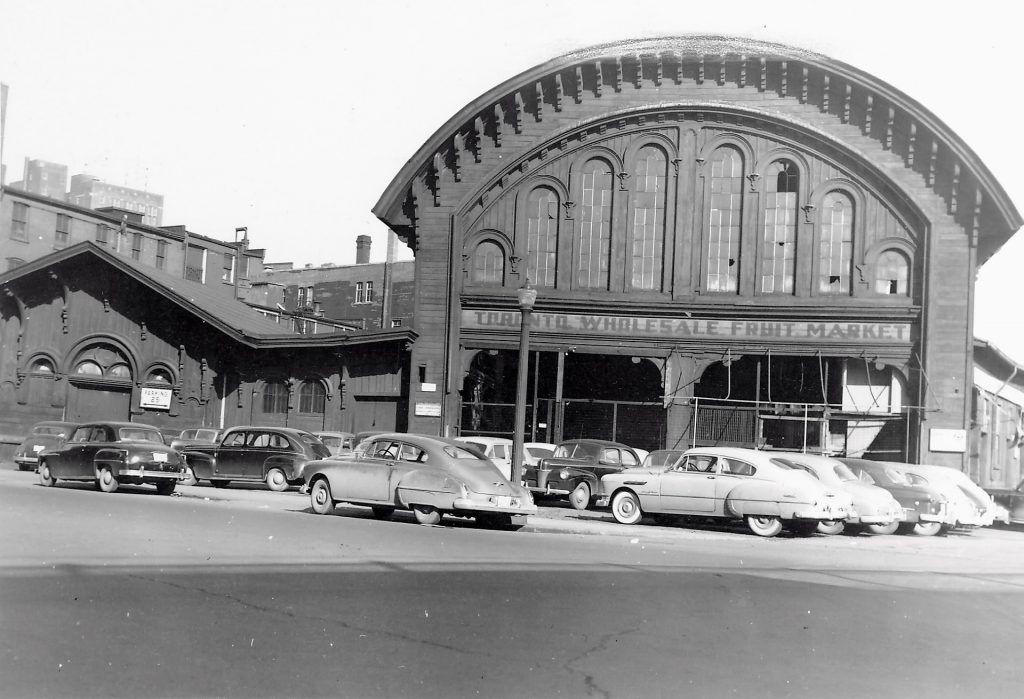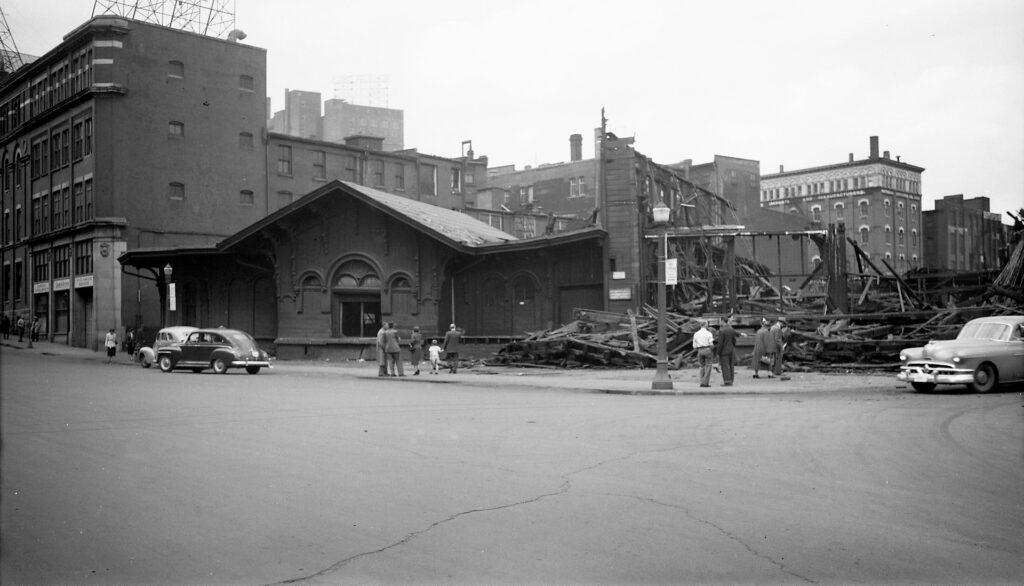Summary
The Great Western Railway built its first passenger station in Toronto near the present location of the Sir Isaac Brock Bridge in 1855. It was located at the eastern end of the railway’s Toronto Branch, which extended to Toronto from Hamilton. In addition to the station building itself, other railway buildings nearby included a freight shed and a small roundhouse. The roundhouse and its turntable were necessary to turn Great Western trains around once they reached this end of the line, as well as to store and maintain locomotives. The first Great Western train arrived in Toronto on December 3rd, 1855, though its original station was only used for a few years. Upon the opening of Toronto’s first Union Station on June 21st, 1858, the Great Western Railway began using it instead.
Due to the inadequate nature of Union Station, the Great Western opened its own passenger station at Yonge Street and The Esplanade on March 2nd, 1866. The station was oriented diagonally to The Esplanade, having a semicircular roof with two portals at one end for four tracks to enter from only one side. Its most striking feature was the arched train shed with a circular galvanized iron roof. A sign reading “Great Western Railway” spanned the top of both portals. A series of eight arched windows on the Yonge Street side of the shed, as well as a continuous series of smaller windows running along each side of the shed, provided excellent lighting. This was the first passenger train station in Toronto to provide total shelter for passengers on the platforms. On the south side of the structure was a spacious freight shed and office, while the north side contained the passenger facilities. The latter included separate waiting rooms for men and women, a telegraph office and a refreshment room. Under the flat roof connecting the passenger facilities with the train shed were the baggage facilities and a platform 195 feet long and 36 feet wide. Under the flat roof connecting the passenger facilities with the train shed were the baggage facilities and a platform 195 feet long and 36 feet wide. Its prime location near Toronto’s Victorian-era financial district made it the most conveniently-placed railway station in the city upon its opening. The Ontario Parliament buildings were located on Front Street three blocks west of the station, and it was also in the vicinity of numerous hotels and several ferry and steamboat docks on Lake Ontario. By 1867, a total of ten trains arrived and departed the Great Western station each day. While the Great Western Railway would no longer be a tenant of Union Station, they would continue to stop their trains nearby as a convenience for passengers.
By the time the Yonge Street station opened, the Great Western’s business was suffering because of a track gauge incompatibility with its American connections. The larger Grand Trunk Railway gained control of the Great Western in 1882 as a means to keep it from the hands of its new rival, the Canadian Pacific Railway. Subsequently, all trains that served the Yonge Street station were moved to Union Station. The building was converted entirely into a freight shed and used to directly serve local businesses that didn’t otherwise have convenient access to the railway. The “Great Western Railway” sign was subsequently replaced with one that read “Grand Trunk” instead. The building only operated in this capacity until 1896 and the structure was sold off around 1904. It was readapted into the Toronto Wholesale Fruit Market, a role it was used in longer than it was as a railway station. The lake was filled in south of the Esplanade in the 1920’s, and the tracks leading into the former station building were subsequently removed and replaced with a loading dock for trucks. Unfortunately, a devastating fire tore through the building on May 17th, 1952, rendering it unsalvageable. The remnants were dismantled shortly thereafter and the O’Keefe Centre for the Performing Arts opened on the site in 1960. More recently, a large condominium tower was built on top of the area the station was located.
Condensed Station Info:
| Location: | Served By: | Current State: | Date Built: | Date Demolished: |
| Bathurst Street (First) Yonge & Esplanade (Second) | Great Western Railway (1855 – 1858, 1866 – 1882) | Demolished (First) Burned Down (Second) | 1855 (First) 1866 (Second) | 1858 (First) 1952 (Second) |


